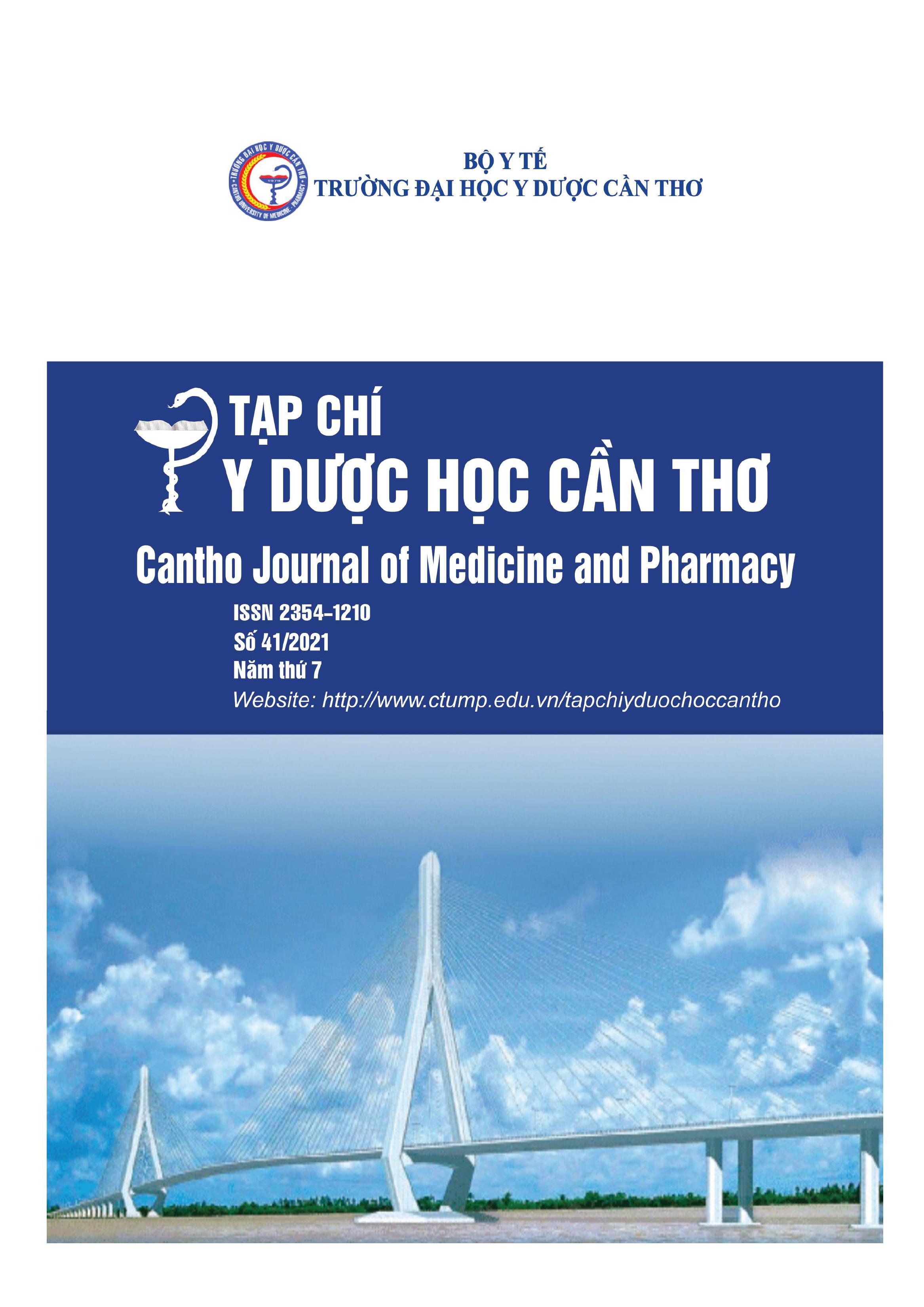STUDY ON CLINICAL AND PARACLINICAL CHARACTERISTICS AND TREATMENT OF HYALINE MEMBRANE DISEASE IN PRETERM NEONATE BY SURFACTANT REPLACEMENT WITH LISA METHOD AT CAN THO GYNECOLOGY OBSTETRICS HOSPITAL
Main Article Content
Abstract
Background: Hyaline membrane disease is a common problem in preterm infants. This disorder is caused primarily by a deficiency of pulmonary surfactant in an immature lung. The less invasive surfactant administration (LISA) for the treatment of respiratory distress syndrome has been proven to be effective, safe and feasible and is being applied in many parts of the world. Objectives: 1) To describe clinical, paraclinical features and treatment of hyaline membrane disease in preterm neonates with LISA method. 2) Evaluation of the resulting value and some unsuccessful factor associations with the surfactant replacement with LISA method. 3) Investigate some factors related to treatment failure in the surfactant replacement with LISA method. Materials and methods: A cross-sectional study was conducted on 169 premature infants diagnosed with respiratory distress syndrome. They were admitted to the Neonatology Department at the Can Tho Gynecology Obstetrics Hospital from 01/2019 - 12/2020. Results: The rate of male was 59.2%, the average gestational age was 31.3 ± 2.7 weeks and the infant birth weight was 1576 ± 463 grams. There were 29.6% of patients having severe level of respiratory failure and the rate of grade II, III based on X-ray image was 78.7%. The rate of early-onset neonatal infections was 15.4%. Surfactant replacement reduces FiO2 concentration (53.1% vs 32.8) and increases SpO2 (88.6% vs 94.1%). Especially, 6 hours after supplement, the rate of grade III based on X-ray reduces from 86.7% to 31.1%. The success rate was 62.2%. The rate of mortality was 37.8%. Relevant factors to failure treatment were gestation, birth weight, early-onset neonatal infection (OR=5.33, p=0.034), infants having severe levels of respiratory failure (OR=5.63, p=0.029). Conclusion: The treatment of hyaline membrane disease using surfactant for preterm neonates showed positive results and should be implemented to save premature infant lives.
Article Details
Keywords
Hyaline Membrane Disease, surfactant, LISA
References
2. Huỳnh Thị Duy Hương (2016), "Bệnh lý phổi gây suy hô hấp sơ sinh", Sách giáo khoa nhi khoa, Nhà xuất bản y học, tr.232-247.
3. Nguyễn Thị Mai Hương (2019), "Đánh giá hiệu quả và tính khả thi của phương pháp bơm surfactant ít xâm lấn trong điều trị hội chứng suy hô hấp ở trẻ đẻ non", Tạp chí Nhi Khoa, 12 (4), tr.27-32.
4. Hoàng Thị Thanh Mai (2006), "Bước đầu đánh giá hiệu quả của surfactant điều trị bệnh màng trong ở trẻ đẻ non tại khoa Sơ sinh Bệnh viện Nhi Trung ương", Luận văn tốt nghiệp bác sĩ nội trú, Trường Đại học Y Hà Nội.
5. Nguyễn Thị Kiều Nhi (2006), "Tìm hiểu một số nét dịch tễ học bệnh nhiễm trùng sơ sinh sớm", Tạp chí Y học thực hành, Kỷ yếu công trình nhi khoa (552), tr.97-100.
6. Trần Thị Thủy, Ngô Thị Xuân (2017), "Kết quả phương pháp INSURE trong điều trị hội chứng suy hô hấp ở trẻ đẻ non tại Bệnh viện Sản Nhi Bắc Ninh năm 2017", Tạp chí Khoa học ĐHQGHN: Khoa học Y Dược, 33 (2), tr.106-114.
7. Phạm Hoàng Văn (2019), "Đặc điểm lâm sàng, cận lâm sàng và kết quả điều trị bệnh màng trong bằng bơm surfactant ở trẻ sơ sinh non tháng tại Bệnh viện Sản Nhi An Giang 2019-
2020", Luận văn CKII, Đại học Y dược Cần Thơ.
8. Ngô Minh Xuân, Lê Thị Cẩm Giang, Nguyễn Thì Từ Anh (2019), "Hiệu quả của kỹ thuật bơm surfactant ít xâm lấn", Y Học TP. Hồ Chí Minh, 23 (3), tr.283-291.
9. Christine S. M. Lau, Ronald S. Chamberlain, Shyan Sun (2017), "Less Invasive Surfactant Administration Reduces the Need for Mechanical Ventilation in Preterm Infants: A MetaAnalysis", Global pediatric health, 4 2333794X17696683-12333794X17696683.
10. Dargaville P. A., Aiyappan A., De Paoli A. G., et al. (2013), "Minimally-invasive surfactant therapy in preterm infants on continuous positive airway pressure", Arch Dis Child Fetal Neonatal Ed, 98 (2), pp.122-126.
11. Kanmaz H. G., Erdeve O., Canpolat F. E., et al. (2013), "Surfactant administration via thin catheter during spontaneous breathing: randomized controlled trial", Pediatrics, 131 (2), e502-509.
12. Sweet D. G., Carnielli V., Greisen G., et al. (2017), "European Consensus Guidelines on the Management of Respiratory Distress Syndrome - 2016 Update", Neonatology, 111 (2), 107-125.
13. Sweet D. G., Carnielli V., Greisen G., et al. (2019), "European Consensus Guidelines on the Management of Respiratory Distress Syndrome – 2019 Update", Neonatology, 115 (4), 432-450.


